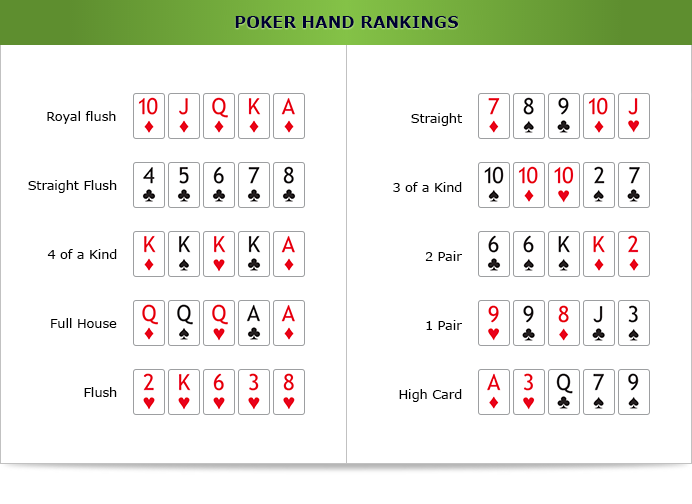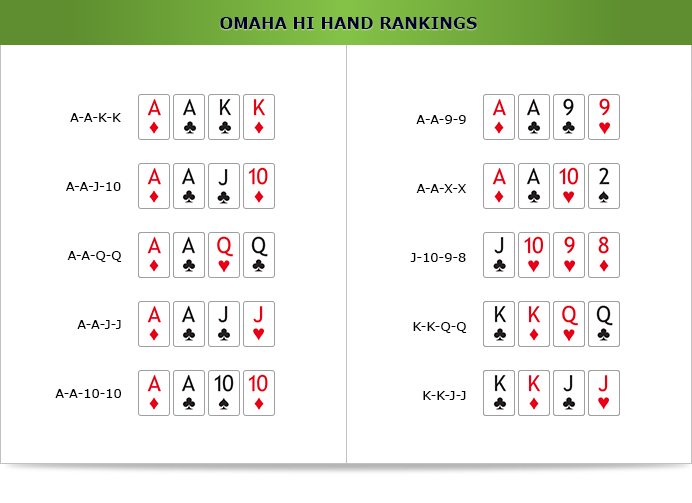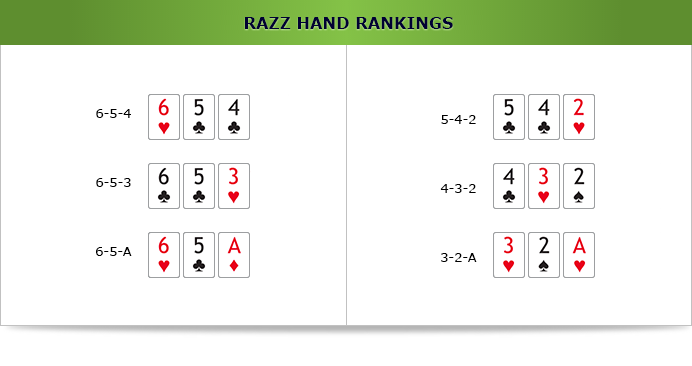Essential Poker Rules 101

Playing - and winning - at online poker in 2024 isn't simply a case of choosing a game at random on a leading poker site for US players, firing up the tables, and learning “on the fly.”
Even the most basic knowledge of poker rules will make your online poker experience a much happier one.
So, before you sign up to one of our recommended poker rooms from LegalPoker.com for US players, get a handle on how to play with our essential 101.
Texas Hold'em
Unless you're an old-school road gambler who spent their youth playing stripped-deck Stud or 5-Card Draw, most novice poker players come to the game learning Texas Hold'em first.
And it's not surprising; the “Cadillac of Poker” - as the legendary Doyle Brunson calls it - is the easiest form of poker to learn, and if played in its popular No Limit format, the most exciting to play, as well.
Fortunes are won or lost at the turn of a No Limit Texas Hold'em card, but the majority of NLHE players take a lifetime to master the nuances of the game - and many have gone broke in the process.
In Texas Hold'em, each player is dealt two “hole” cards face down in front of them. The object is to make the best five-card hand containing any five – that can be any comobination from their own two, plus five “community” (shared by all players at the table) cards, dealt face up in the center of the table.
Hands are ranked from the worst – (simply a high card) - up to the best hand - a Royal Flush (10-J-Q-K-A of the same suit):
Before play begins, two forced bets - the small blind and big blind - are put into the pot by the two players to the left of the Dealer (Seat 1) and these move the action along. In a tournament, blinds increase incrementally over a time period, thus bringing the tournament to a logical conclusion.
After an initial round of betting - going clockwise from the button - three community cards ("the flop") is dealt face up, and another round of betting ensues. A fourth card ("the turn") is then dealt, followed by a further round of betting. The fifth "river" card is dealt face up to complete "the board" and a final round of betting takes place. Any players left in the hand then showdown, with the best hand taking the pot.
Players don't have to use either of their two hole cards, and “split pots”sometimes take place, where two players will either have the same hand or will “share the board” (the five community cards form the best hand available).
Betting:
Bets in Hold'em differ depending on what format of the game is being played. Limit Hold'em has fixed betting limits, so in a game where the blinds are 200/400, the first betting rounds have raises restricted to 200, while later raises are restricted to 400.
In No Limit Hold'em, however - the most popular form of the game - there is no limit to the raise allowed. Players cannot be “priced out” of a raise if they don't have enough chips; they can simply go “all-in” and win based on what percentage of the total pot they have in front of them.
For example, you're sitting in a No Limit Texas Hold'em tournament and have 1,500 chips in front. A player raises to 3,000, and you move all-in for your remaining chips. You can now go to a showdown and win up to 1,500 of your opponent's chips (plus anything that's already in the pot).
Top Tip:
Sensible hand selection and position in Hold'em are key to learning the game. You should be playing premium hands in all positions (A-A, K-K, Q-Q, A-K suited) while restricting your starting hands in early position - when you don't have information on what's gone before - is sensible. It can be dull, but there's no shame in folding the majority of hands when in Early Position (i.e. the Small and Big Blind).
Omaha
Omaha is played in both Limit and Pot Limit formats (and sometimes No Limit), but Pot Limit is the most common form of this 4-card version of Hold'em.
Omaha sees each player being dealt four cards in the hole. There are the same rounds of betting as in Texas Hold'em (a round of betting, a dealt flop, another round of betting, etc.) but at showdown, players MUST use any two of their hole cards in conjunction with any three cards on the board in order to make a five-card poker hand.
While Omaha Hi is common (where the best five-card poker hand scoops the pot, à la Texas Hold'em), Omaha Hi-Lo, also known as Omaha 8, or Omaha 8-or-Better, sees the pot split between the highest and lowest poker hands. A “qualifying” low hand will contain five cards of 8 or lower.
Betting:
Limit Omaha follows similar betting to Texas Hold'em, but in its most popular form, Omaha is played Pot Limit. With Pot Limit card games, raises are restricted to what's in the pot at any given time, plus the call.
For example, let's say you are playing a $1/2 Pot Limit Omaha cash game. Player A has put in his small blind of $1, Player B puts in his $2 and the action is on you next. To raise you have to call the previous bet ($2), which is added to the $3 in blinds, making the pot $5. Add those two together and you can make a bet of $7. Pot Limit Omaha can get quite terrifying in the kinds of pots that are created - especially at the higher stakes - and it has therefore become a popular format for cash games.
Top Tip:
Good starting hand selection and the ability to read the board are essential when playing Omaha. There are so many possible hands out there - and draws and re-draws to them - that a situation can change at any time. You can quickly find a very good hand in Omaha being beaten by a drawing hand, so it's essential that when betting and raising post-flop you are drawing to the nuts or near-nuts.
As for a basic set of starting hands in Omaha Hi (for simplicity's sake), here's an easy top 10, where all hands are double-suited (two cards of one suit, two of another suit):
Stud
Stud evokes the old-school backrooms of a Vegas long gone, but the game - in both its 5-card and 7-card varieties - is proving hugely popular with today's Internet generation.
In fact, Stud is consistently talked up as the “next big thing” in online poker, but while we wait for that prediction to come true, why not try it online at a top US legal poker site and see for yourself.
If you are used to the blinds of Texas Hold'em, you'll be surprised by the introduction of antes that you see in both varieties of the game.
Antes are places by all players prior to a hand. Cards are then dealt to each player, one card face down (for 5-card) and two for 7-card Stud. Each player then receives one card face up each.
The player with the highest up card is the “bring-in” and starts the action.
Betting:
A Limit betting structure is normally employed in Stud, so for a game of $3/6 cash, for example, the bets would be in increments of $3 for the first two rounds and increments of $6 for the remaining rounds.
After a round of betting, a further card is dealt to each player face up, then another after a further round of betting. A final card is dealt face down to each player, more betting, then a showdown, with the best 5-card hand winning.
There is a nuance of betting in the game, however, in 7-card Stud. If a player is displaying a pair with their two up-cards on fourth street, he is allowed to bet the lower or higher betting limit.
Top Tip:
5-card Stud: There's only one down-card in 5-card Stud, as opposed to 7-Stud's two, so it's much easier to put your opponents on a range of hands. Most of the time you'll be taking down hands with pairs and high cards, and if you don't have at least a pair in your starting three cards, ditch the hand.
7-card Stud:
A lot of winning hands in 7-Stud come from a high two-pair type hand, rather than flushes and straights. Therefore, if you're starting a hand with a straight draw, for example, make sure it contains two high cards to give yourself outs later down the line.
Razz
Razz forms part of the celebrated mixed-game discipline, H.O.R.S.E., and if you've played other lowball games like 2-7 Triple Draw or Omaha Hi-Lo, you'll understand how to play.
Whereas 7-card Stud requires you to get the highest hand to win, the lowest, or worst, hand in Razz will scoop you the pot.
Therefore, 5-4-3-2-A (the wheel) is the best hand in Razz. Note that straights don't count here. After that, hands go down (or up) from the highest card on, so next best is 6-4-3-2-A, then 6-5-4-3-2 and so on.
Betting:
Hands are dealt the same as regular Stud Hi, with two hole cards face down and one face-up card dealt to each player. Antes are paid in, and the highest showing up-card "brings in" the betting. Three cards are dealt to each player with betting rounds in between, and a final seventh card is dealt face down to each player left in. A final round of betting takes place before showdown.
The betting pattern in Razz is the same as 7-card Stud and follows a Limit structure.
Top Tip:
In Razz, you're looking for the WORST possible hand, so pay attention to what's been folded and what's been dealt to other players. As for starting hands, a good rule of thumb is to fold any starting hands that contain a pair, a picture card or a ten.
Good Razz Starting Hands:




